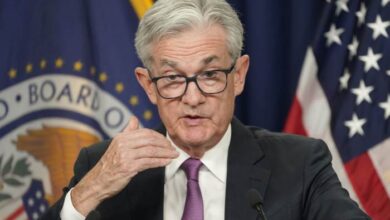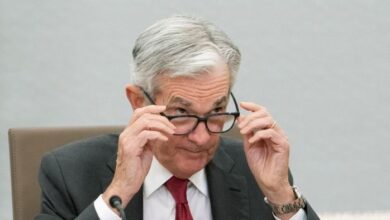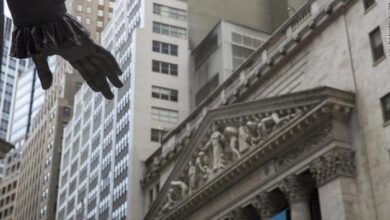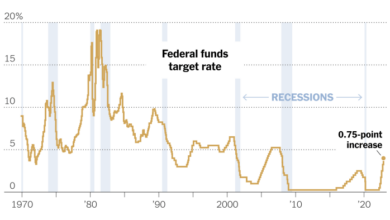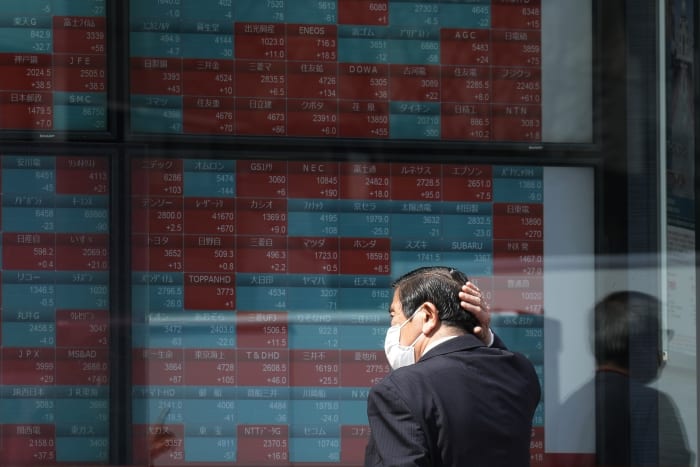
Wall Street Sees Market Decline Amid Labor Data and Rate Hike Worries
Wall Street bears witness to market decline amid labor data and rate hike concerns, a cocktail of factors that have sent shivers down the spines of even the most seasoned investors. The recent market dip, fueled by a confluence of economic indicators, has left many wondering about the future trajectory of the stock market.
The latest labor data, which revealed a surprisingly resilient job market, has fueled concerns about the Federal Reserve’s commitment to curbing inflation. This, coupled with the prospect of further interest rate hikes, has created a climate of uncertainty and volatility that is keeping traders on edge.
The decline has impacted various sectors and asset classes, with technology stocks bearing the brunt of the downturn. Companies reliant on consumer spending have also faced headwinds, as rising inflation and interest rates have squeezed household budgets. This has sparked concerns about a potential recession, with analysts debating the likelihood and timing of such an economic downturn.
Market Decline
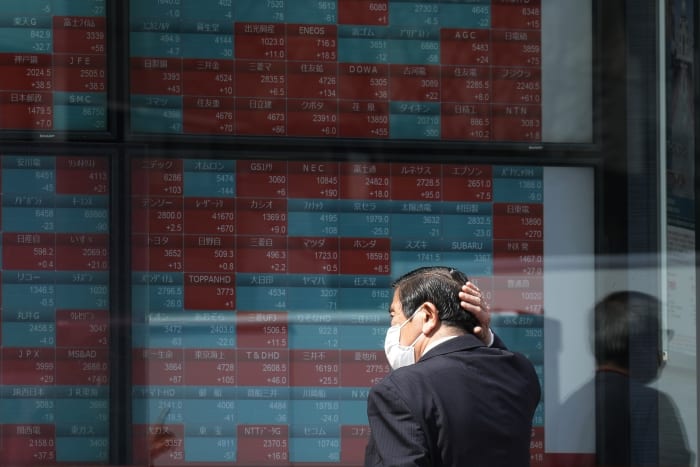
Wall Street has witnessed a significant market decline in recent weeks, driven by a confluence of factors, including concerns about rising inflation, the Federal Reserve’s aggressive interest rate hikes, and weakening economic data.
Impact on Different Sectors and Asset Classes
The market decline has impacted various sectors and asset classes differently.
- The technology sector, which has been a significant driver of market gains in recent years, has been particularly hard hit. Companies like Tesla and Meta have seen their stock prices plummet, reflecting investor concerns about slowing growth and rising interest rates.
- The energy sector has also experienced volatility, with oil prices falling as concerns about global economic growth weigh on demand.
- The healthcare sector has been relatively resilient, as investors view healthcare companies as a safe haven during periods of economic uncertainty.
- Bonds have also experienced losses, as rising interest rates have reduced the value of existing bonds.
Labor Data
The latest labor data release has sent ripples through the market, highlighting the ongoing tug-of-war between strong employment and persistent inflation. Investors are carefully scrutinizing the data for clues about the Federal Reserve’s future interest rate decisions.
Impact of Labor Data on Investor Sentiment
The relationship between employment trends and investor sentiment is complex and multifaceted. A strong labor market, characterized by low unemployment and robust job growth, typically signals a healthy economy. This can boost investor confidence, leading to increased investment and a rise in stock prices.
Wall Street bears witnessed a market decline as investors grappled with mixed labor data and rising concerns over interest rate hikes. While the broader market struggled, a glimmer of optimism emerged from the electric vehicle sector, as us stock market displays mixed results as electric vehicle stocks rally.
Despite this positive development, the overall market sentiment remained cautious, reflecting the uncertainty surrounding future economic prospects and the Federal Reserve’s monetary policy.
Conversely, a weakening labor market can raise concerns about economic slowdown and potentially trigger a decline in stock prices.
Comparison to Historical Trends
The current labor market situation can be compared to historical trends to gain insights into the potential trajectory of the economy and the stock market. For example, the recent decline in unemployment rates is similar to the trends observed during the economic recovery following the 2008 financial crisis.
However, the current inflation environment is significantly different, adding another layer of complexity to the analysis.
Rate Hike Concerns
The recent market decline has been fueled by a confluence of factors, with rate hike concerns playing a significant role. As central banks around the world grapple with persistent inflation, they have been raising interest rates to cool down the economy and curb price pressures.
This has created a volatile environment for investors, who are now facing a complex interplay between economic growth, inflation, and monetary policy.
Impact of Rate Hikes on Market Volatility
Rate hikes are a powerful tool for central banks to control inflation. By increasing borrowing costs, they aim to reduce consumer spending and business investment, ultimately slowing down economic activity. However, this process can also lead to market volatility. Higher interest rates make it more expensive for companies to borrow money, which can impact their profitability and stock prices.
Wall Street is on edge, watching the market tumble as investors grapple with mixed labor data and the looming specter of another interest rate hike. While the economic landscape remains uncertain, the US government is taking a firm stance against counterfeit drug operations, imposing sanctions on Chinese and Mexican companies linked to the production of fake pill-making equipment.
This crackdown highlights the global fight against counterfeit pharmaceuticals, a growing threat that adds another layer of complexity to an already volatile market.
Additionally, rising interest rates can make bonds less attractive to investors, leading to a decline in bond prices. This interplay between interest rates, economic growth, and asset prices is what drives market volatility.
Potential Impact of Future Rate Hikes on Economic Growth and Inflation
The impact of future rate hikes on economic growth and inflation is a complex and debated topic. Some economists argue that aggressive rate hikes could tip the economy into recession, while others believe that a more measured approach is necessary to tame inflation without jeopardizing growth.
Wall Street is grappling with a volatile market, driven by anxieties around labor data and the possibility of further interest rate hikes. Amidst this uncertainty, some analysts are finding solace in Tesla’s future prospects. Ark Invest anticipates the Tesla Cybertruck to achieve mainstream success comparable to the Model Y , potentially bolstering Tesla’s overall performance and offering a glimmer of hope for investors navigating the current market turbulence.
The key factor influencing the outcome is the balance between the need to control inflation and the desire to avoid a recession.
Investor Strategies to Mitigate Rate Hike Risks, Wall street bears witness to market decline amid labor data and rate hike concerns
Investors are employing a range of strategies to mitigate the risks associated with rate hikes. These include:
- Shifting towards value stocks:Value stocks, which are companies with strong fundamentals and undervalued by the market, are often seen as more resilient to rising interest rates. These companies tend to have lower debt levels and generate consistent cash flows, making them less susceptible to economic downturns.
- Investing in short-term bonds:As interest rates rise, the value of long-term bonds tends to decline. Investors are shifting towards short-term bonds, which are less sensitive to interest rate changes. This strategy aims to preserve capital and generate stable returns.
- Increasing cash holdings:Some investors are opting to increase their cash holdings as a buffer against market volatility. This allows them to wait for a better entry point or to deploy capital into undervalued assets when the market stabilizes.
Wall Street Perspective: Wall Street Bears Witness To Market Decline Amid Labor Data And Rate Hike Concerns
The recent market decline has sparked a wave of uncertainty on Wall Street, as analysts and investors grapple with the implications of weak labor data and the Federal Reserve’s aggressive stance on interest rate hikes. The sentiment on Wall Street is a mix of concern and cautious optimism, with many strategists expecting further volatility in the coming months.
Analyst Opinions and Outlook
Wall Street analysts are divided on the outlook for the market, with some predicting a further decline and others seeing potential for a rebound. Many analysts believe that the market is still grappling with the impact of inflation, rising interest rates, and geopolitical uncertainty.
However, some strategists remain optimistic, citing strong corporate earnings and a resilient consumer as potential catalysts for a market recovery.
“We believe that the market is likely to remain volatile in the near term, but we are cautiously optimistic about the long-term outlook,” said [Name of Analyst], Chief Investment Strategist at [Name of Financial Institution].
“The market is pricing in a significant amount of uncertainty, and we expect to see more volatility in the coming months,” stated [Name of Analyst], Head of Equity Research at [Name of Financial Institution].
Investor Sentiment
Investor sentiment on Wall Street is currently cautious, with many investors adopting a wait-and-see approach. The recent market decline has led to increased risk aversion among investors, with many choosing to hold cash or invest in more conservative assets. However, some investors remain optimistic, believing that the market decline represents a buying opportunity.
“We are seeing a lot of caution among investors, but there is also a sense of opportunity for those who are willing to take on more risk,” commented [Name of Investor], Portfolio Manager at [Name of Investment Firm].
“The market is in a period of adjustment, but we believe that there are still attractive investment opportunities available,” stated [Name of Investor], Managing Director at [Name of Investment Bank].
Impact on Investors
The recent market decline, fueled by concerns about labor data and potential rate hikes, has left investors grappling with uncertainty and volatility. Navigating this turbulent landscape requires a careful assessment of risk tolerance and a strategic approach to portfolio management.
Investor Strategies
Investors are adopting a range of strategies to weather the current market storm. Some are taking a more conservative approach, reducing their exposure to equities and shifting towards fixed-income investments. This strategy aims to preserve capital and minimize losses during a market downturn.
Others are seeking opportunities in sectors that are less sensitive to economic fluctuations, such as healthcare and consumer staples.
- Defensive Positioning:Investors are shifting towards sectors considered less vulnerable to economic downturns, like healthcare and consumer staples. These sectors often provide a degree of stability during market volatility.
- Value Investing:Some investors are focusing on undervalued stocks, seeking companies with strong fundamentals but currently trading below their intrinsic worth. This strategy aims to capitalize on potential future growth and price appreciation.
- Diversification:Diversifying across different asset classes, sectors, and geographies is crucial for mitigating risk. Investors are spreading their investments across various markets to reduce the impact of any single asset’s performance.
- Dollar-Cost Averaging:Regularly investing a fixed amount, regardless of market conditions, helps to average out the cost of investments over time, reducing the impact of volatility.
Potential Risks and Opportunities
The current market environment presents both risks and opportunities for different investor profiles.
Risk-Averse Investors
- Lower Returns:Conservative strategies, while aiming to preserve capital, may yield lower returns compared to more aggressive approaches during market upswings.
- Inflation Risk:Fixed-income investments, such as bonds, may lose value if inflation rises faster than interest rates.
Growth-Oriented Investors
- Market Volatility:Equities are more volatile than fixed-income investments, exposing investors to potential losses during market downturns.
- Interest Rate Risk:Rising interest rates can negatively impact the valuation of growth stocks, particularly those with high valuations and future earnings expectations.
Portfolio Management in Volatile Markets
Managing a portfolio in a volatile market requires a disciplined approach and a focus on long-term goals.
- Rebalance Regularly:Rebalancing a portfolio periodically ensures that asset allocation remains aligned with investment goals and risk tolerance. This involves selling overperforming assets and buying underperforming ones to maintain the desired balance.
- Monitor Market Conditions:Staying informed about economic indicators, interest rates, and geopolitical events helps investors make informed decisions and adjust their portfolios accordingly.
- Seek Professional Advice:Consulting with a financial advisor can provide valuable insights and guidance, especially for investors who are unfamiliar with navigating complex market dynamics.

